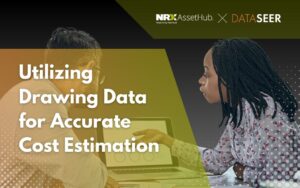Migrating Bills of Materials (BOMs) to a new Enterprise Asset Management (EAM) system is a critical step for organizations modernizing their operations. BOMs—detailed records of the parts, components, and materials used for maintenance—are vital for asset management. However, this process is rarely simple. Inconsistent data, outdated records, and structural differences often create hurdles that can disrupt timelines, increase costs, and hinder efficiency.
This blog explores the key challenges organizations face when migrating BOMs and how AI-powered tools can simplify and optimize the process.

Common Challenges in BOM Migration
1. Inconsistent and Outdated BOM Data
BOMs stored in legacy systems often contain missing parts, obsolete components, or inaccurate specifications. These issues create ripple effects, including disrupted maintenance schedules, procurement mistakes, and unreliable data in the new system.
2. Duplicate and Redundant Records
Over time, decentralized teams and manual updates can result in multiple versions of the same BOM. These duplicates complicate the migration process. If not addressed, they can inflate inventory costs and cause confusion once the new system goes live.
3. Manual Cleansing and Validation
Cleaning and validating BOMs manually is a time-consuming and error-prone task, especially for organizations with thousands of records. Relying on manual processes increases the risk of transferring poor-quality data to the new EAM system.
4. Lack of Standardization
BOMs often lack consistency in structure, naming conventions, and formats across regions, departments, or suppliers. This inconsistency creates integration challenges, requiring significant effort to harmonize the data for the new system.
5. Complex Integration Requirements
Modern EAM systems rarely operate in isolation. They connect to procurement platforms, supplier databases, and maintenance logs. Misaligned or incompatible BOM data can lead to bottlenecks, causing delays and downstream disruptions.
6. Legacy System Limitations
Many older systems don’t provide tools for extracting or formatting BOM data in a way that works with modern EAM platforms. As a result, organizations need to clean, reformat, and restructure data, which adds time and complexity to the migration.
7. Resource Constraints
BOM migration requires expertise, time, and resources—three things many organizations lack. Limited staff or rushed data preparation often results in overlooked errors or incomplete validation, which can cause issues post-migration.

The Role of AI in Simplifying BOM Migration
AI-driven tools are revolutionizing BOM migration by automating complex tasks and ensuring data accuracy. Instead of relying on manual processes, organizations can leverage AI to clean, standardize, and validate BOMs efficiently.
How AI Helps:
1. Automated Cleansing
AI algorithms identify errors, correct inconsistencies, and merge duplicate records. They can also fill in missing details by referencing historical data, creating a cleaner and more reliable dataset.
2. Enforcing Standardization
AI ensures BOMs follow consistent structures and naming conventions across the organization. This standardization simplifies integration into the new EAM system and improves long-term usability.
3. Real-Time Validation
AI tools validate BOMs by cross-referencing supplier catalogs, maintenance logs, and historical data. Any anomalies or inaccuracies are flagged for quick review, ensuring only high-quality data is migrated.
4. Predictive Insights
AI-powered analytics provide deeper insights into part usage and inventory needs. By analyzing historical trends, AI can help optimize inventory levels and forecast future maintenance requirements.

Conclusion
Migrating BOMs to a new EAM system is a complex but essential process for improving operational efficiency and asset management. However, without addressing challenges like inconsistent data, duplicates, and legacy system limitations, organizations risk delays and costly errors.
By leveraging AI-powered tools, businesses can simplify BOM migration, ensuring data is clean, consistent, and validated in real time. AI not only automates manual tasks but also provides predictive insights to optimize inventory management and maintenance planning.
In the end, a successful BOM migration builds a strong foundation for smoother operations, better decision-making, and long-term system performance. Organizations that embrace AI tools will find themselves well-prepared to overcome these challenges and unlock the full potential of their new EAM systems.
HubHead and DataSeer’s AI Service combines human-level understanding with machine speed to build a scalable knowledge data store of engineering designs. By integrating these solutions with your existing EAM/CMMS systems and creating a digital twin, you can enhance decision-making and streamline your maintenance processes. Contact us for a free demo or book a call.
Utilizing Drawing Data for Accurate Cost Estimation

The Challenges of Table Data Extraction

The Tedious Nature of Creating Piping Lists Manually

Share this article

